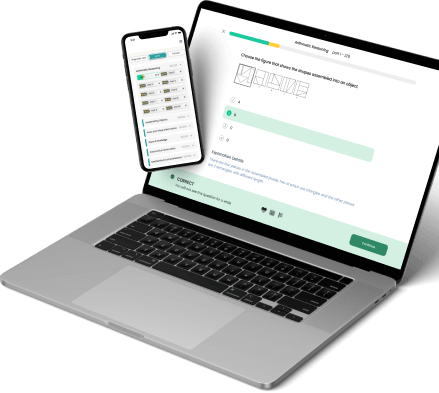Fun & effective EMT practice test tool to pass with flying colors
All-in-one platform with everything you need to ace the EMT on your first attempt
Clear and Thorough Learning Path
Proven EMT 3-step Practice Formula
After our 100,000+ users' success stories, we developed a 3-step strategy to provide you with the most precise and in-depth learning path while minimizing your prep time.EMT Diagnostic Test
First, take this short test and get your detailed report showing your strong and weak areas. Save your time by concentrating on what is in demand.Learning
With quick, bite-sized learning techniques and a detailed study guide for each EMT section, you can really strengthen your weaknesses (from step 1) and boost your scores.EMT Full Test
The last step for your preparation is taking our full EMT practice tests and seeing how far you've come since the beginning. Repeat the 3-step formula until you are satisfied with your results!Ready to start?
Thousands of EMT users already accomplished their goals.NOW it’s your turn!

What You Get
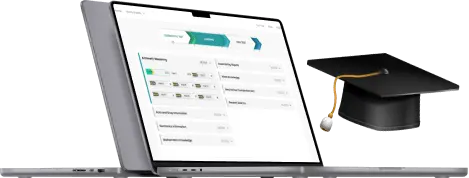
All-in-one platform
A complete EMT Prep Platform, including a diagnostic test, detailed study guides for all topics, practice questions with step-by-step explanations, and various full simulator tests.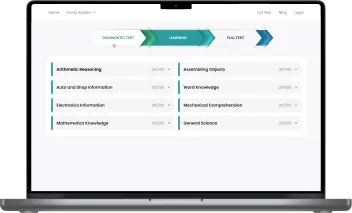
Questions nearly identical to those in the real EMT test
All questions are categorized into the specific sections as on the real EMT: Same format & same difficulty!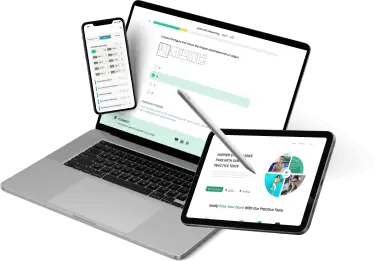
Best for the busy
Easily & quickly grasp all the knowledge with our unique learning technique. And you can learn anytime, anywhere on any devices, even with a few free minutes.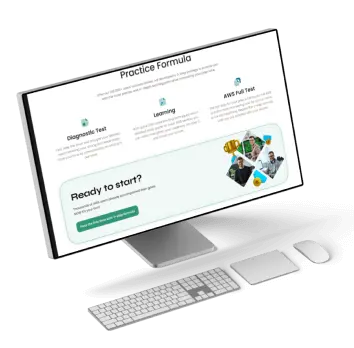
Practice while having fun
Learn and play! Complete round-by-round to reach your daily achievement and make progress on your learning journey!Featured on















What our users are saying
Over 50,000 aspiring American candidates use EMT monthlyFree EMT Practice Test 2024
Are you curious about the EMT Exam? Do you want to know what it covers, how much time it takes and if you need to bring anything? Do you know how to study with EMT practice tests the right way? This article will provide all of the information and materials you need for preparing for and taking the NREMT exam!
What does EMT stand for?
Emergency Medical Technicians or EMTs are essential to the preservation of lives in times of emergency. They are in charge of giving immediate care and transport to patients who are either in a life-threatening situation or not and each EMT must be alert and quick in responding to these of kind situations. To work as an EMT, one must be trained and knowledgeable regarding the specifics of the job must be certified, and must also be licensed by the state. To be a certified EMT, one must pass the examination for the National Registry of Emergency Medical Technicians Certificate.
The EMT exam consists of two exams which are: the Cognitive Exam, and the Psychomotor Exam. The Cognitive Exam is computer-based, meaning it is answered through a computer, and adaptive because the questions become harder as the previous items are answered correctly. Meanwhile, the Psychomotor is a scenario-based exam that tests practical skills regarding emergencies. Unlike the Cognitive examination, however, the Psychomotor exam is not administered by the National Registry so the examinee must contact their State EMS office to take the exam.
To register for the EMT Cognitive Exam, visit the NREMT website and follow the register instruction. To get ready and familiarize yourself with the test format, take our thousands of free EMT-B questions and EMT practice test now!
How many questions are on the EMT-B registry exam?
There are a total of 70-120 items in the EMT test with 10 of the items not counted towards the final score. Thus, the total of items counted for assessing the final score range from 60-110 items.
What score do you have to make on the national registry NREMT test?
The exam will continue to give the examinee questions until it is 95% sure that the examinee has can pass or fail the exam. After the exam and once the result in the examiner's account is printable, it's considered as a pass. If it's not, the examinee can retake the test up once again up to six times.
How long is the EMT-B exam?
A maximum of two hours is given to the examinee who is taking the EMT exam but most of the time, the examinee can finish the exam without reaching the time limit.
How much is the EMT exam fee?
The Cognitive exam will be handed out by the National Registry of Emergency Medical Technicians (NREMT) and the exam will cost $98 for the application fee. This fee will is non-transferable and will not be reimbursed. A fee also has to be paid each time the examinee decided to retake the exam.
What's on the EMT test?
It goes without saying that there are many ways to get ready for the EMT exam, but you also need to be aware of what to expect on test day. You should be familiar with the questions that will be asked on the EMT exam, the testing procedures, the time allotted, and all the DOs and DON'Ts for the test day.
It's also critical to remember that there are various steps involved in becoming an EMT. Prior to taking the EMT exam, you must have finished a state-approved EMT course. You also need to be a "Healthcare Provider" with a valid CPR-BLS.
The EMT Cognitive exam is administered as a Computer Adaptive Test, or CAT. This means that each candidate is evaluated based on where their answers fall on the spectrum. Once a candidate gets a few answers correct, the computer will automatically introduce harder questions to continue testing the candidate’s abilities.
Sections in EMT Exam
The Cognitive Exam and the Psychomotor Exam are the two parts of the NREMT exam.
The EMT exam will cover Emergency Medical Service care which includes the sections listed below. Each section will have 85% of their test questions be about adult patients while the other 15% will be related to pediatric patients.
EMT COGNITIVE EXAM
Because the NREMT cognitive exam is computer-adaptive, the complexity of the questions is based on how well the candidate answered the problems that came before them. Participants should anticipate answering between 70 and 120 questions on the test, of which between 60 and 110 will be used to determine the final score. 10 pilot questions are included on the test, but they don't count toward your final grade. It takes two hours to do the exam in its entirety. Until the computer is 95% confident that you are either at or over the competency requirement for passing the exam, or that you are unable to reach the standard of competence required to pass the exam, the questions will be asked.
- Airway, Respiration, and Ventilation
This section will cover 18%-22% of the questions in the exam. This part of the exam will assess the examinee's knowledge regarding the proper care for patients who are: in need of treatment for blocked air passageways, having problems with ventilation and breathing, and in need of a primary assessment. Since the exam includes items for adult and pediatric patients, the examinee must also be knowledgeable about the different bodily conditions of all ages.
- Cardiology and Resuscitation
The cardiology and resuscitation section will cover 20%-24% of the questions in the examination. This portion of the exam will assess the examinee's knowledge regarding the specifics of handling a patient with cardiopulmonary problems like for instance, test their knowledge about the proper handling of a patient who is suffering from cardiac arrest. Other topics covered in this section include knowledge of the cardiovascular systems and anatomy as well as the handling of people that experienced injuries from shocks.
- EMS Operations
The Emergency Medical Service Operations section covers 10%-14% of the contents of the exam. Unlike the other sections of the exam, there's no specified percentage of the coverage of this section for adult and pediatric patients. The EMS Operations cover a wide range of topics about Emergency Medical Services. The topics that will be encountered are those about emergency care for patients, legal concepts and ethic standards in the medical field, environmental incidents or hazards while on the field, traffic and ambulance car management on the road, and medical care during times of disasters or terrorist attacks.
- Medical and Obstetrics/Gynecology
Medical and Obstetrics/Gynecology covers 27%-31% of the exam's questions. Just like the other sections of the exam (except EMS Operations), 85% of the contents are centered on emergencies regarding adult patients while the other 15% are for handling pediatric patients. In the Medical and Obstetrics/Gynecology section, a wide range of topics are involved.
Topics you will encounter include the anatomy of the different systems, and the illnesses involved in them, and how to take care of them. The test also covers knowledge about handling patients suffering from the effects of toxic substances as well as toxicants, psychiatric problems, assessment of non-traumatic and traumatic patients, as well as mother and the child care before, during, and after birth.
- Trauma
The trauma section of the exam covers 14%-18% of the questions that the examinee will encounter. This portion of the exam will test the examinee's knowledge regarding handling and assessment of patients suffering from single or multiple traumas in different parts of their bodies like the tissues, spine, abdomen, head or neck, and the musculoskeletal system. The trauma section of the exam will also include anatomy topics about the body parts mentioned.
EMT PSYCHOMOTOR EXAM
This exam employs real-world, practical examinations to gauge a candidate's capacity to fulfill particular requirements. The NREMT does not give the EMT Psychomotor exam, in contrast to the Cognitive exam. Instead, the State EMS Office is in charge of overseeing each exam.
The following subject areas are covered by the psychomotor exam:
- Patient Assessment/Management
- Ventilation
- Long Bone Immobilization
- Spine Immobilization
- Bleeding Control/Shock Management
- Cardiac Arrest Management
- Joint Immobilization
NREMT Test Tips and Tricks
- Join an online course or an academy that gives review or training for EMT exams. After all, nothing is better than having an initial experience and a good stock of knowledge.
- Take EMT practice tests in EMT courses or online. Practice exams can prepare the examinees for the real test questions they will encounter in the future. You can directly train yourself with our free NREMT practice test on this website.
- Do not be frantic when taking the exam. Examinees, no matter what kind of exam they might encounter, must have an organized and peaceful state of mind so that they can properly answer the exams. Take it easy and make sure to have steady breathing while going through the questions in the exam.
- Try to look for clues hidden in the questions. Sometimes, the question is already telling the answer itself. The scenarios on the other hand are just add-ons for the examinee to better understand the question.
- Utilize your notes and textbook.
- Study Consistently and Do Not Take the EMT Exam Until You Are Prepared
- Carefully go over the EMT practice questions.
How to Prepare for an EMT Test Day?
Since you cannot find employment without the necessary certification, passing the cognitive section of the EMT test is a significant professional achievement. Additionally, failing the exam more than once may necessitate remediation or necessitate retaking the whole EMT course. This can make taking the EMT exam quite stressful for many people. But doing as much preparation as you can in advance and being aware of what to expect when you show up for the exam is a terrific approach to reducing fears and anxieties.
It is a good idea to plan ahead and arrive early at the testing location because test takers only have two hours to complete the exam. Consider coming at least 30 minutes early. This will give you more time in case you have trouble finding the testing location or run into any problems while registering. During this time, you can also figure out where the restrooms are and become accustomed to the exam center's layout.
NREMT Practice Test Study Guide
On many EMT practice tests, there is a section that describes the response possibilities. Reading the explanation and assuming that you now understand it completely can be seductive. The majority of the time, an explanation, however, just touches on a small piece of the question's greater context. Even if the explanation seems straightforward, review it again and carefully explore each concept related to the topic until you are certain that you understand it.
As you go, keep in mind that the EMT practice test is just that—practice. Memorizing these questions and answers won't be very helpful because it is unlikely that any of the exact questions from this test will appear on the actual one.
If all you are familiar with are the right answers to the EMT practice questions, you won't be prepared for the actual exam. If you properly understand the topics through studying them, you will be able to respond to any question on the test.
It's important to hold off on taking the EMT practice exams until you're ready. If you take an exam on the first day of studying, the amount of material offered and what you need to understand could be daunting. You should progressively get ready.
In addition to studying with a range of study tools, it's always a good idea to practice taking tests before the actual exam. The EMT test is timed, so practicing for it beforehand can help you predict how you'll react under pressure.
For EMT mock tests, it's also a good idea to have a study partner, classmate, or acquaintance arrange the questions in ascending order of difficulty. This procedure can help you get a better sense of how the computer-adaptive exam would feel.
EMT Frequently Asked Questions
What to bring and not bring on the day of the exam?
Bring two valid identification cards (I.D.) The first one must include a permanently attached or nonremovable photo of the examinee's face, and their signature, although the signature is not required for identification cards used by the military. The other ID should be able to obedient the name and signature of the examinee.
Note: Do not bring any temporary or paper forms of IDs. They will not be accepted. Do not bring reference materials too as they are not allowed inside the examination room especially once the exam had started. There's no need to bring a pen or pencil as the exam itself is computer-based.
What does it take to be an EMT?
Requirements for taking the EMT test include: minimum age of 18 years old to take the test, a graduate of an EMT course that meets the criteria for National EMS Education Standards for the EMT, and the exam must be taken within two years after completing the said course.
What Happens If I Don't Pass the NREMT?
An aspiring examinee can retake the EMT exam a total of six times. However, the third failure imposes a sanction where the examinee has to take a remedial class of around 24 hours in length and must show a certificate of attending the remedial class to be allowed to take the test once again. If the examinee failed all six tests, retaking the entire EMT course or program is required before they can start retaking the EMT exam.
When will my EMT test scores arrive?
The results of the EMT exam can usually be received within two days. The examinee can check the account they used to take the exam to view their test results.
Where do I take the EMT practice test?
Thousands of free EMT-B practice questions are available on our website. Our free EMT practice test and questions are all based on the previous exams, with the format exactly the same as the real one. Besides, we gamified the test so it can kill your boredom while learning. All you need to do is pass it round by round just like playing a game!
What are the requirements for the EMT test?
To take the EMT test, you must be at least 18 years old. Additionally, candidates must have passed an EMT training course within the two years prior to the exam date.
Can I reschedule my EMT test?
Yes, you can cancel or reschedule your exam by calling 866-673-6896 (M-F, 7 am-7 pm CST) or login into your account at least 24 hours prior to your scheduled testing time. If you reschedule or cancel via phone, there is an additional $10.00 fee in addition to the $25 cancellation or rescheduling fee. You will need to re-register and pay additional application fees if you don't cancel in a timely manner or don't show up on the day of your exam.
When will I get the results of my EMT exam?
Normally, two business days after you finish your exam, the results of your exam will be posted to your National Registry account.
Learning With Our EMT Practice Tests
Our NREMT practice exams include every subject, and the questions are the same as those on the actual EMT test. If any of your responses are erroneous, you will be given a thorough explanation. Additionally, you can create your own study schedule.
Our website offers you a stunning user interface and an easy learning process that will help you do better on your actual NREMT exam. You can also download our mobile application and learn both online and offline. I hope you like it!






